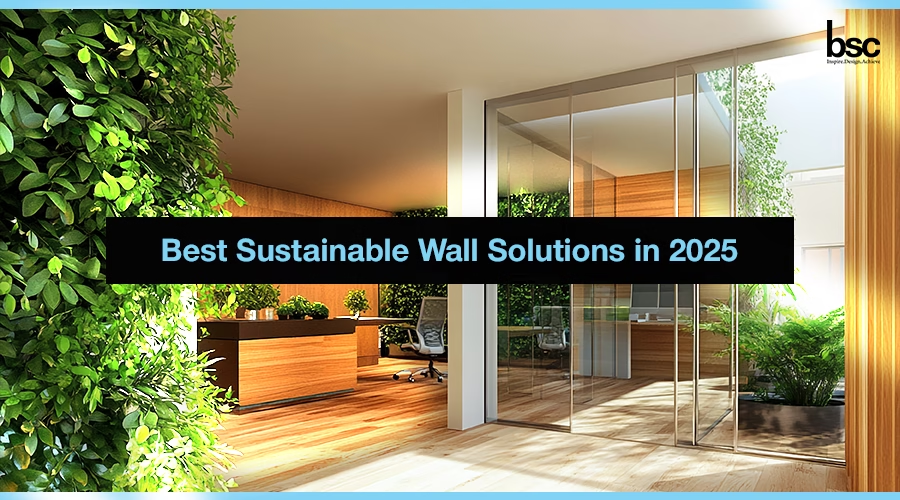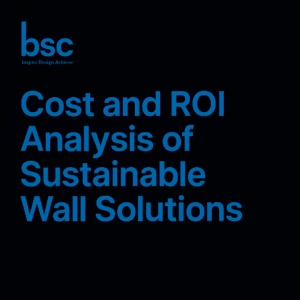Overview of Sustainable Wall Solutions Fro 3M, Vox and Somany
In 2025, no longer just simple structural additions, wall solutions have become an integral part of a sustainable, innovative, and attractive interior. This detailed blog discusses the evolution of wall solutions that have taken us from the use of hard and cement to a contemporary, green, and technologically integrated building.
It discusses the growing demand for sustainable walls in homes, offices, hospitals, and commercial premises, namely energy efficiency, conservation of resources, and well-being of occupants. Readers will learn about different types of sustainable walls, such as green walls, prefabricated and modular panels, recycled products, bright walls, acoustic systems, and natural materials like bamboo and cork.
Other areas covered in the blog include sustainability measures, costing, regional perspectives on wall construction in India, and global trends that will change the future of wall construction.
All homeowners, architects, builders, and interior designers will find valuable guidance on making the right wall solution decisions, the importance of ROI processes, and ways to apply eco-friendly materials that do not compromise on aesthetic and performance values.
Taking into account price factors, home accessibility, and exciting technology, this blog becomes a one-stop shop to help all readers design attractive, practical, and sustainable interiors.
Introduction: The Importance of Sustainable Wall Solutions
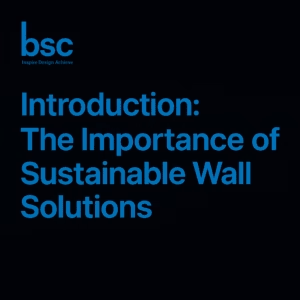
By 2025, sustainability will not just be limited to energy-efficient appliances and eco-friendly furniture, but will also apply to structures and interiors, including walls. Walls can no longer be considered mere partitions, but a component of the broader energy efficiency, design, and national responsibility of any building.
Why Focus on Sustainable Walls?
- Environmental Impact: Traditional wall construction mainly involves cement and bricks, which consume a lot of energy and increase carbon levels in the atmosphere. Using eco-friendly materials on your walls can reduce corrosion.
- Indoor Air Quality: Green walls are a source of fewer volatile organic compounds, improving air quality levels in both residential and office buildings and returning health and comfort levels.
- Durability and Maintenance: Sustainable walls are made from high-quality, recycled, or renewable materials and typically require less maintenance over the long term.
- Water and Energy Efficiency: Modern sustainable walls feature water and energy-efficient designs that provide regular temperatures and reduce heating and cooling costs.
Key Takeaways:
- Green wall systems are sustainable, functional, and attractive.
- Increasing urban density brings efficiency to the design of walls and makes them as flexible as possible to make the most of the available space.
- To achieve green building standards such as LEED, BREEAM, and IGBC, architects, interior designers, and homeowners are now focusing on the use of sustainable materials.
Knowing about the availability of sustainable wall solutions can help builders and consumers make informed decisions that can be beneficial in terms of environmental well-being, costs that will pay off in the long run, and the total cost of building integration.
Understanding Wall Solutions: Types and Applications
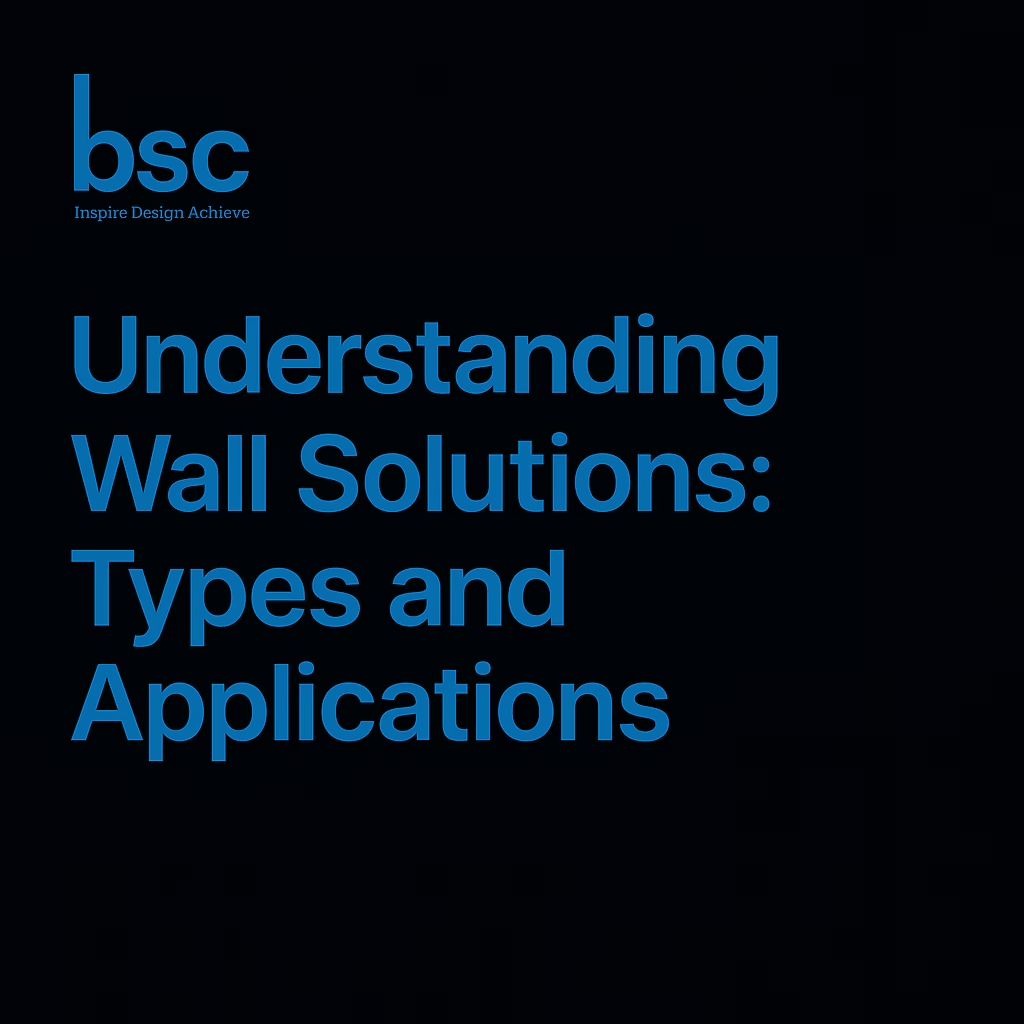 Walls can not only separate space, but also provide a blend of strength, beauty, and utility in homes, commercial, and industrial buildings.
Walls can not only separate space, but also provide a blend of strength, beauty, and utility in homes, commercial, and industrial buildings.
Types of Wall Solutions:
- Load-Bearing Walls:
- Build on the foundation
- with concrete blocks, reinforced masonry, or bricks.
- Partition Walls:
- Everything that separates spaces through non-load-bearing walls.
- Materials include double-sided walls, mesh walls, and wood.
- Cladding and Wall Panels:
- Exterior or interior cladding improves appearance and thermal properties.
- Example: wood, metal, or DecorAds panels.
- Drywalls and Modular Walls:
- Lightweight, quick to repair, and very suitable for office interiors.
- Soundproofing and wiring tunnels can also be installed with insulation.
Applications:
- Residential Spaces: Living rooms, bedrooms, and kitchens require walls that are suitable for thermoses and beauty.
- Commercial Buildings: Offices, retail stores, and hotels require walls that are competitive, portable, and low-maintenance.
- Industrial Spaces: The use of walls in factories and warehouses helps in insulation, protection, and partitioning.
Contemporary wall solutions are multi-factorial, 100% eco-friendly, and aesthetically appealing, which means these solutions can be used in a variety of applications. Designers can make the most of structural efficiency and interior beauty by choosing the right type.
Why Sustainability Matters in Wall Construction
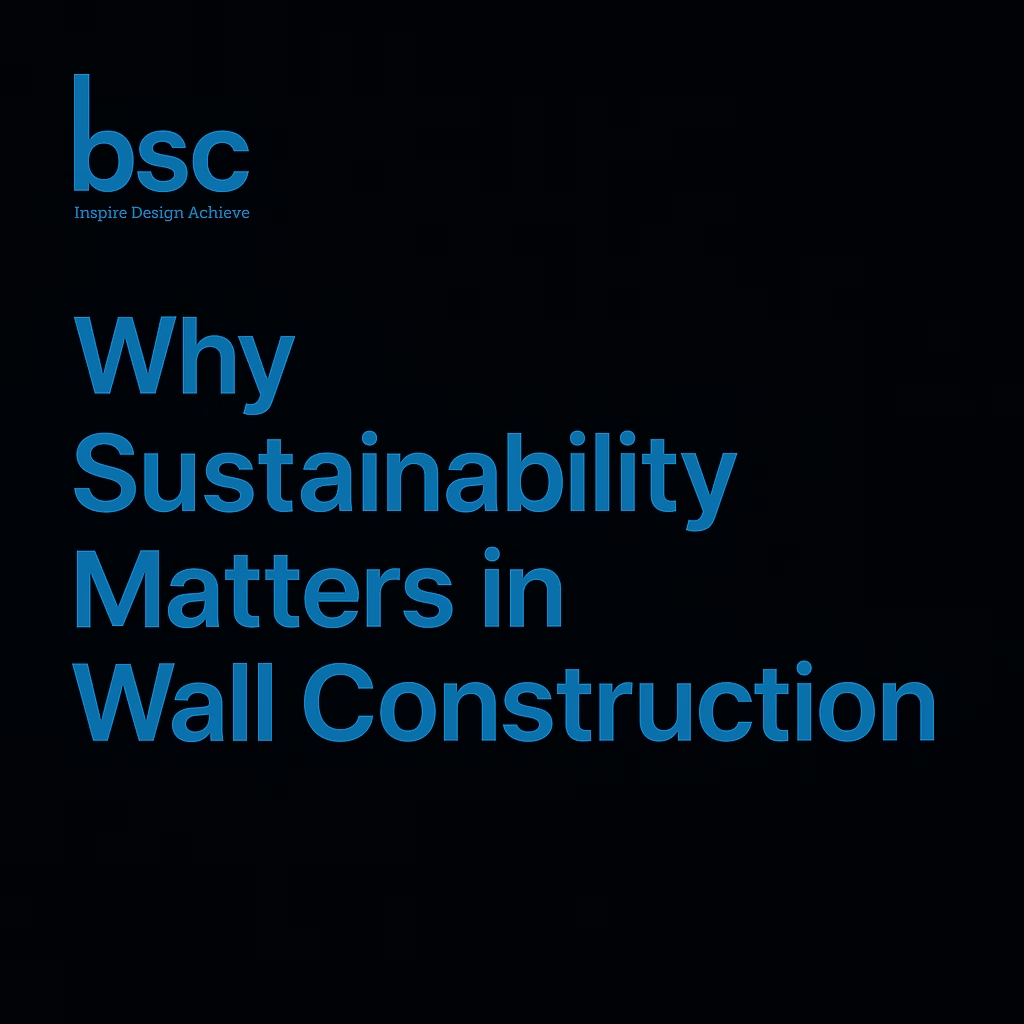 Sustainability is no longer an optional subject as it is one of the fundamental requirements of the modern construction industry. The walls of a structure play a vital role in both the building’s carbon emissions, energy efficiency, and indoor environment.
Sustainability is no longer an optional subject as it is one of the fundamental requirements of the modern construction industry. The walls of a structure play a vital role in both the building’s carbon emissions, energy efficiency, and indoor environment.
Key Reasons for Sustainable Wall Construction:
- Reduced Carbon Footprint: By using recycled or renewable products such as fly ash bricks, bamboo panels, or eco-friendly composite materials, specifications can reduce the carbon footprint caused by CO2 emissions.
- Energy Savings: Insulated walls save energy – this reduces heating and cooling consumption.
- Healthier Indoor Environment: All-natural materials and low-VOC paints reduce indoor air pollution and improve health.
- Waste Minimization: Prefabricated and modular walls generate less waste during construction, which can be used to achieve circular economy goals.
Benefits in Practical Terms:
- Lower energy and maintenance costs.
- Compliance with green building environmental requirements such as LEED, IGBC, and BREEAM.
- The property has the ability to be sold at the highest price due to being built using modern, sustainable construction methods.
Eco-friendly construction of walls is relevant to environmental consciousness, aesthetic value, and economic cost efficiency, and should therefore be taken into consideration by both homeowners and commercial builders.
Eco-Friendly Materials for Wall Solutions
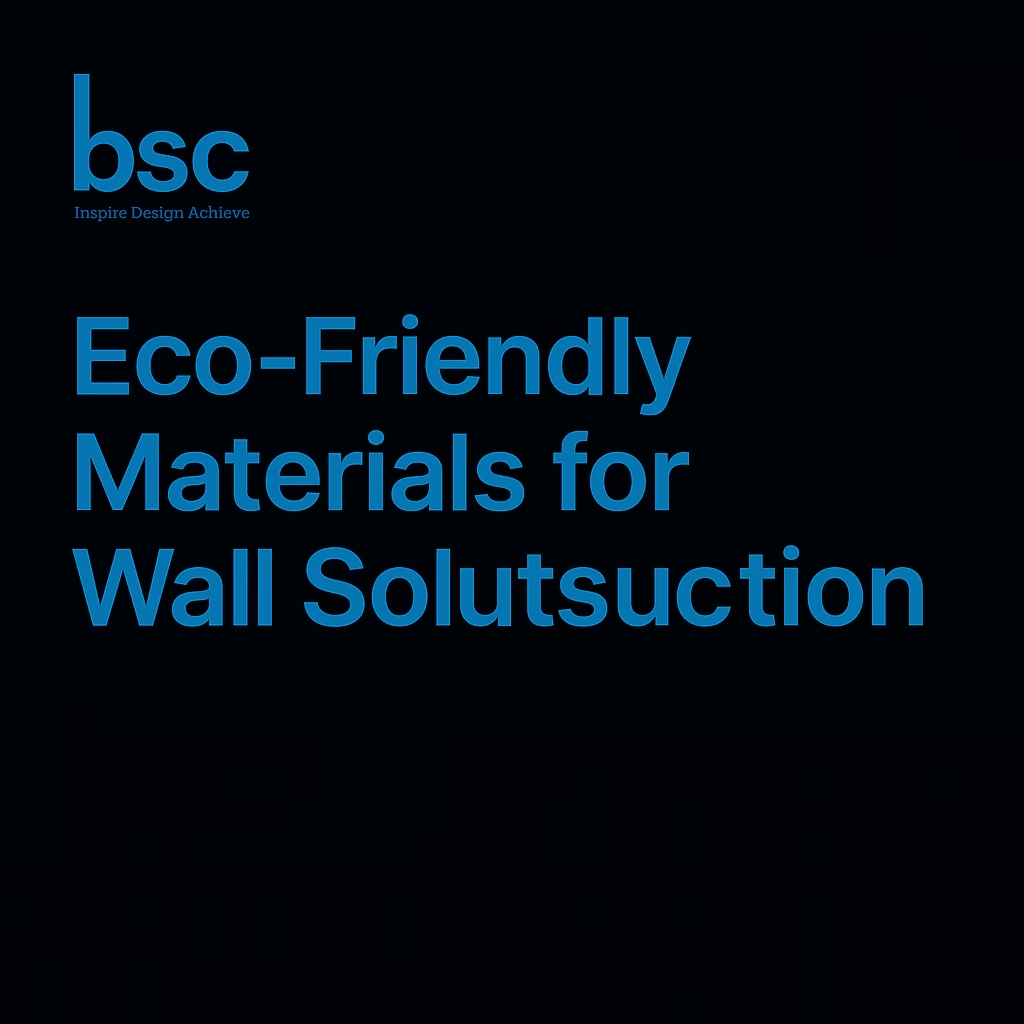 The use of sustainable materials is the most essential basis of sustainable wall solutions. These materials have reduced environmental impact, increased durability, beauty, and indoor comfort.
The use of sustainable materials is the most essential basis of sustainable wall solutions. These materials have reduced environmental impact, increased durability, beauty, and indoor comfort.
Types of Eco-Friendly Materials:
- Recycled Materials:
- Sun-dried bricks, fly ash, or crushed concrete bricks require no natural resources.
- Natural and Renewable Materials:
- Bamboo panels and cork boards are lightweight, renewable, and attractive.
- The use of clay and mud bricks improves thermal insulation in itself.
- Low-VOC and Non-Toxic Finishes:
- Paints and plasters with low volatile organic compounds prevent indoor air pollution.
- Lime-based finishes are durable and sustainable.
Benefits of Using Eco-Friendly Materials:
- Health: Non-toxic finish improves indoor air quality and improves air quality for both staff and residents.
- Sustainability: Reduces landfill and carbon footprint.
Practical Tips for Selection:
- To confirm certification of environmental compliance.
- Materials used should be locally sourced to limit transportation emissions.
- Equally combine aesthetics with practical applications such as insulation and fire retardancy.
Eco-friendly materials not only make the walls durable, energy efficient, and aesthetically pleasing aspects of the building, but they also become highly functional.
Energy-Efficient Wall Solutions
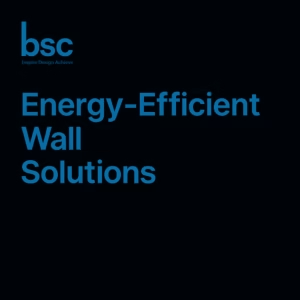 In terms of energy efficiency, walls are vital to reducing heating and cooling costs and increasing sustainability by 2025.
In terms of energy efficiency, walls are vital to reducing heating and cooling costs and increasing sustainability by 2025.
Features of Energy-Efficient Walls:
- Insulation Layers: Walls with built-in insulation prevent excessive heat transfer.
- Thermal Mass: Materials such as concrete or clay can absorb and emit heat slowly, keeping the temperature inside the home balanced.
- Reflective Finishes: When light-colored or reflective materials are used, this can help prevent excessive heat absorption and keep interiors cool.
Benefits:
- Lower Energy Bills: Excellent walls will reduce the use of HVAC systems.
- Comfortable Interiors: The temperature inside the house will remain consistent throughout the year.
- Environmental Impact: Less energy consumption means lower carbon emissions.
Common Energy-Efficient Wall Types:
- Insulated Concrete Panels: Provide strength as well as thermal insulation.
- Structural Insulated Panels (SIPs): Lightweight, prefabricated, and easy to install.
- Green Walls with Vegetation: Significantly reduce heat impact, improve air quality, and provide natural insulation.
These walls are energy efficient and provide the best performance in terms of thermal resistance, durability, and environmental impact through technology, materials science, and design.
Innovative Wall Technologies in 2025
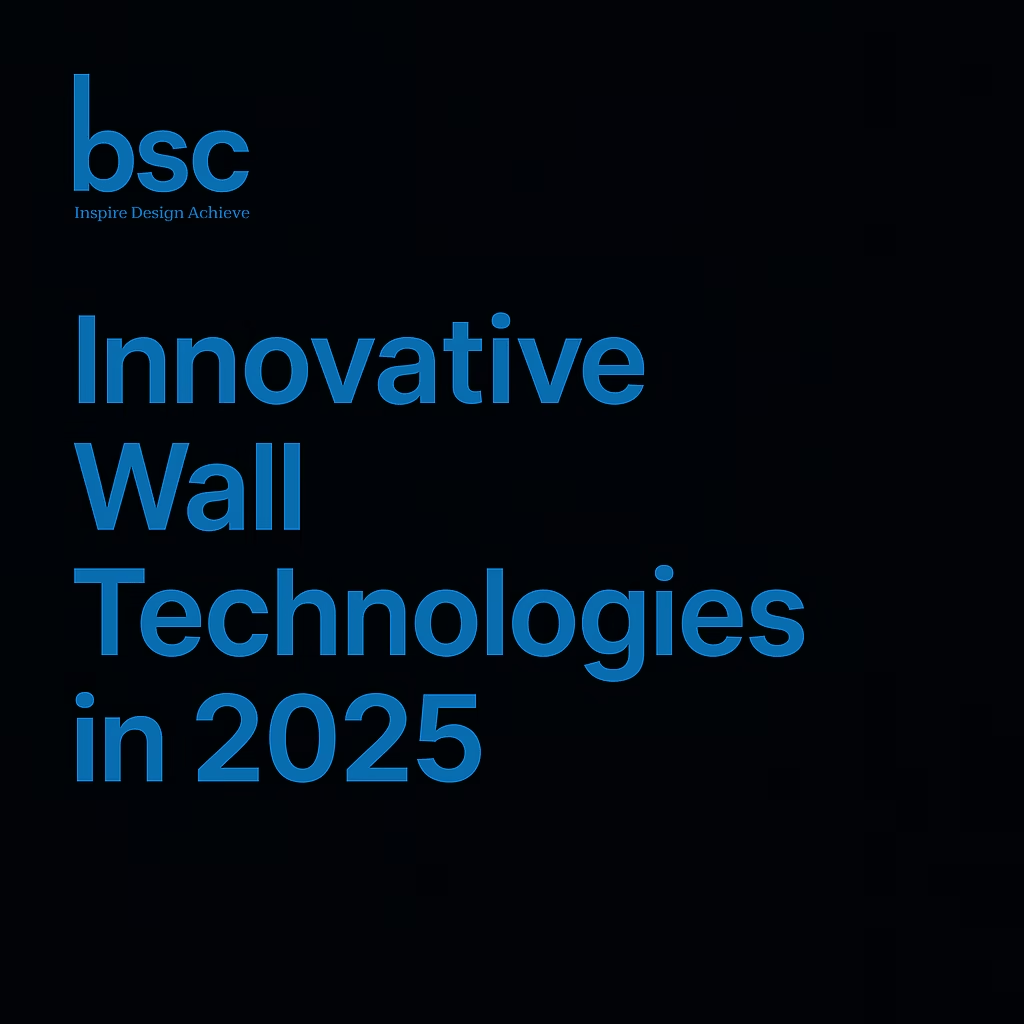
In the modern world, building on a wall is no longer just a barrier; it involves intelligent technology, modularity, and usability.
Key Innovations:
- Smart Wall Panels:
- Combined with temperature, light, and security sensors.
- It can be connected to building automation systems to increase efficiency.
- Modular and Prefabricated Walls:
- Prefabricated panels can be installed quickly with minimal waste.
- Suitable for both residential and commercial projects.
- Acoustic and Fire-Resistant Solutions:
- Prefabricated panels can be installed quickly with minimal waste.
- Suitable for both residential and commercial projects.
Benefits:
- Time-Saving Installation: Prefabricated panels reduce work on the jobsite.
- Customizable: Modular systems are easy to resize or upgrade.
- Sustainable: Construction waste and energy use are reduced.
The innovation opens a door to 2025 by making wall solutions multi-functional, efficient, and ready to face the future requirements of contemporary construction.
Sustainable Wall Solutions for Residential Spaces
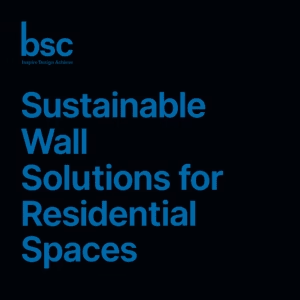
Eco-friendly wall container houses are one of the latest trends among homeowners who want to create the perfect balance between looks, comfort, and environmental friendliness.
Key Features for Residential Walls:
- Low-Maintenance Materials: Bamboo sheets, reclaimed wood, and non-VOC finishes are easy to maintain.
- Acoustic Performance: Soundproofing materials help maintain a comfortable space designed for quiet and relaxing living.
Popular Residential Applications:
- Living Rooms and Bedrooms: Design attractive walls with natural and eco-friendly paints or modular sheets.
- Kitchens and Bathrooms: Durable wall finish; washable, moisture-resistant finish.
- Home Offices: Modular walls with built-in cable management ensure both functional and aesthetic support.
Benefits of Residential Sustainable Walls:
- Energy Efficiency: Soundproof walls save on monthly bills.
- Healthy Living Environment: The use of non-toxic materials improves air quality.
- Design Flexibility: A wide range of natural materials is available in terms of texture, colour, and pattern.
Designers provide homeowners with economical, aesthetic, and eco-friendly walls that make the home stylish and sustainable.
Sustainable Wall Solutions for Commercial Spaces
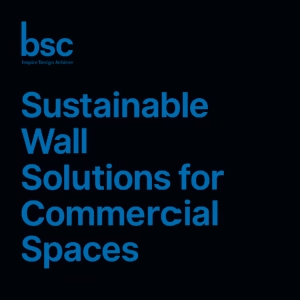
Wall solutions required for commercial buildings should be durable, economical, and eco-friendly, as these have high foot traffic and usage.
Key Features for Commercial Walls:
- Durable Finishes: Does not scratch, stain, or wear easily.
- Fire Safety Compliance: Fire-resistant walls ensure the safety of residents and are legal.
Applications in Commercial Spaces:
- Offices: Modular walls have the flexibility to be reorganized as layouts change.
- Retail Spaces: Sturdy panels make the environment modern and interesting.
- Hotels and Hospitality: Aesthetically pleasing and soundproof walls provide a better experience for guests.
Benefits of Commercial Sustainable Walls:
- Lower Maintenance Costs: High-quality materials last longer.
- Energy Efficiency: Walls are insulated to reduce air conditioning and heating costs.
- Green Building Certification: Helps buildings achieve LEED, BREEAM, and IGBC points.
Eco-friendly wall solutions in commercial premises not only match the criteria of functionality and appearance, but also reflect the eco-friendly pattern of designing spaces that corporations and hospitality establishments will require in 2025.
Top Wall Solutions for Home Interiors

Contemporary residential spaces require walls that have aesthetic value and functionality.
Popular Wall Solutions:
- Drywall Partitions: Fast installation and easy room expansion.
- Wooden Panels: Enhance the impact of the living space.
- Decorative Wall Cladding: Focal points are created using stone, brick, or metal finishes.
- Eco-Friendly Paint Finishes: Low-VOC and natural paints improve indoor air quality.
Key Benefits:
- Versatility: Walls can be modified to suit their storage, display, or media inclusion.
- Aesthetics: Contemporary fabrics, finishes, and colours will create elegance.
- Sustainability: The use of friendly materials reduces environmental damage.
These types of wall solutions in home interiors strike the perfect balance between modern design, suitability, and green building ideas, ensuring that the home not only looks beautiful but is also environmentally responsible.
Interior Wall Solutions: Enhancing Aesthetics and Functionality
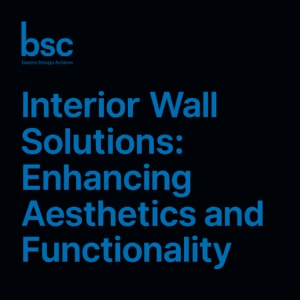
Interior walls aren’t just for separating rooms—they can also enhance the design and utility of an area.
Functional Benefits:
- Space Optimization: Murphy walls can provide a modular setting in an apartment or office.
- Acoustic Control: They increase privacy and comfort by reducing noise from room to room.
- Integrated Storage: Wall panels can be covered with shelves, cabinets, or hidden compartments.
Aesthetic Enhancements:
- Textured Finishes: Three-dimensional panels are also used to add depth to the interiors offered by stone and wood.
- Color Schemes: Wallpaper and coordinated paint can be used with interior designs.
- Feature Walls: Enhance spaces with eco-friendly materials or decorative panels.
Eco-friendly solutions designed to blend practicality and style, interior wall solutions offer homeowners and designers a sustainable way to transform them into functional, beautiful spaces easily.
Dacoraids Wall Panels Price and Features
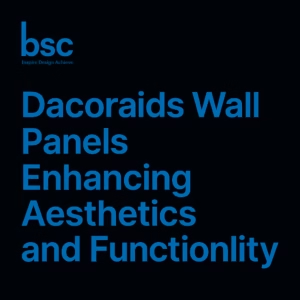
Dacoraids’ wall panels are contemporary and decorative wall solutions intended to complement interior design, specifically focusing on enhancing its visual appearance, whether or not this interior has a functional and sustainable purpose.
Key Features:
- Variety of Materials: Can be manufactured in MDF, PVC, gypsum, and eco-friendly composites.
- Design Flexibility: Panels are available in 3D texturing, geometries, and natural materials such as wood or stone.
- Durability: They are scratch-resistant, moisture-resistant, and easy to clean.
- Eco-Friendly Options: Most panels are recyclable or made from sustainable materials, limiting their impact on the environment.
Pricing Overview:
- Standard Panels: These are affordable and cost an average of ₹200-400 per sq ft, depending on the material and finish used.
- Premium Designs: 3D or textured panels cost between ₹500 and ₹800 per sq ft.
- Installation Costs: Additional charges will be levied depending on labour, wall preparation, and the complexity of the design.
Benefits of Dacoraids Panels:
- Quick Installation: Prefabricated panels save time and waste and are also faster to install.
- Versatility: They can be used in individual homes, workplaces, and commercial properties.
- Aesthetic Appeal: Transform dull walls into statement walls or make specific spaces pop with a significant renovation.
Dacoraids’ wall panels are not only trendy and functional but also eco-friendly, and this is why they have become a popular product among designers and homeowners in 2025.
Wall Solutions Price Guide: Budgeting for Your Project

Budgeting is a critical process in choosing a wall solution as it will vary depending on the material, technique, and installation.
Factors Affecting Price:
- Material Type: Concrete, drywall, MDF, and PVC, as well as bamboo panels, vary in cost.
- Finish and texture: Special finishes, 3D panels, and decorative wall cladding are expensive.
- Complexity of installation: Panel-built-up or prefabricated panels are faster but may require specialist staff.
- Location: Prices for the same cladding may vary depending on local availability and labour costs.
Typical Price Range in India:
- Drywall: Rs 150-300 per sq ft.
- Decorative 3D panels: Rs 400-800 per sq ft.
Tips for Budgeting:
- Shop from different suppliers and evaluate them based on material and labour costs.
- Maintenance and lifespan: A more costly investment at the moment can help save money over time.
- Use materials that are durable and have sustainability incentives and possible green certification awards.
A well-thought-out budget helps you maintain not only aesthetic features but also long-term sustainability, avoiding overspending.
Finding Wall Solutions Near Me: Local Suppliers and Services
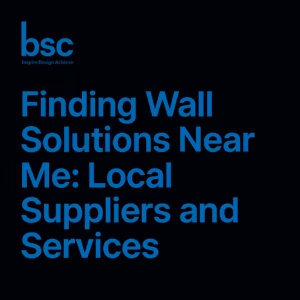
Nearby vendors contribute significantly to the efficient procurement of wall solutions, cutting down on delivery costs and ensuring quick installation.
How to Find Local Wall Solution Providers:
- Online Directories: Use Google directories, Justdial, etc., to find suppliers near you.
- Showrooms: Visiting a local showroom gives you an opportunity to see samples of materials, textures, and finishes.
- Consult Interior Designers: Interior designers have a list of preferred suppliers who can provide quality materials.
Benefits of Choosing Local Suppliers:
- Reduced Delivery Time: Delivery times are reduced, and logistical delays are eliminated.
- Cost-Effective: Minimal transportation charges and local pricing.
- After-Sales Support: Maintenance and warranty support can be obtained very easily.
In the case of residential and commercial products, local suppliers can be a convenient option as they are able to customize products, offer installation suggestions, and provide direct links for eco-friendly wall solutions.
Wall Solutions in India: Trends and Availability
The wall solutions market in India is a dynamically changing sector, and the demand for eco-friendly, aesthetic, environmentally friendly, and advanced wall solutions is on the rise.
Current Trends:
- Eco-Friendly Materials: Recycled wood, bamboo, and fly ash bricks, and low VOC finishes are fast becoming popular.
- Decorative Panels: 3D and decorative wall paneling, stone cladding, and textures are leading the way in residential and commercial projects.
- Prefabricated and Modular Walls: Prefabricated walls are faster to install, and less wastage is preferred in urban construction.
Availability Across Regions:
- Metro Cities: Metropolitan cities like Mumbai, Delhi, Bengaluru, and Chennai have a large number of suppliers and contemporary wall solutions available.
- Tier-2 Cities: The demand is growing, and with it, modular and eco-friendly panels are becoming more available.
- Online Marketplaces: These include IndiaMART, Amazon, and Flipkart, which provide access to branded panels like DecorAds.
Benefits for Builders and Homeowners:
- Diverse choices of materials, designs, and cost.
- A look at innovative and eco-friendly solutions without compromising on style.
- Easy to comply with the eco-friendly building certification.
The wall solutions industry in India in 2025 will be dynamic, eco-friendly, and tech-driven, making it easy to find solutions that suit modern requirements.
Drywall Solutions in Chennai: Options and Installation Tips

Drywall is an impressive and dynamic wall material that fits perfectly into the contemporary interior design of residential and commercial properties in Chennai.
Popular Drywall Options:
- Gypsum Board: It is clean, smooth, and lightweight, which can be painted with paint or wallpaper.
- Cement Board: Waterproof and rainproof, it is ideal for wet spaces like kitchens and bathrooms.
- Soundproof Panels: Special boards for offices, studios, and conference rooms.
Installation Tips:
- Take measurements for correct fitting.
- Use good-quality screws, joints, and finishing compounds to avoid cracks.
- Instead of energy efficiency and soundproofing, integrate insulation.
- Bring in trained personnel to tackle large or commercial projects.
Benefits in Chennai:
- Fast installation makes the job even faster.
- Modular, custom-made designs are suitable for apartments, offices, and shops.
- Eco-friendly drywall products will adapt to the changing demands of sustainable building construction.
Drywalls have a lot of advantages as they are cost-effective, versatile, and eco-friendly; thus making them a good choice in the developing urban interiors of Chennai.
Cost and ROI Analysis of Sustainable Wall Solutions
Factors Affecting Cost:
- Material Choice: Recycled materials, bamboo, or modular panels can all have different prices.
- Installation Complexity: Prefabricated panels can help reduce labour costs; however, custom finishing makes it more expensive.
- Maintenance: Durable, low-maintenance walls will avoid repairs in the future and thus save on maintenance costs.
Calculating ROI
- Energy Savings: Insulated walls will reduce heating and cooling costs by 20-40 %.
- Longevity: Strong and long-lasting walls ensure that they reduce the rate of repairs.
- Property Value: Walls are green and beautiful, and thus contribute to an increase in property value.
Practical Tips:
- Consider your various material and installation options before making your decision.
- Consider not just the cost, but also the benefit of long-term utility savings.
- Look at what green incentives or India Green certification may offer.
Sustainable walls can be used in both commercial and residential projects: they have both a financial and environmental ROI.
Design Trends in Sustainable Walls for 2025
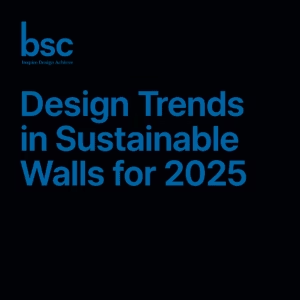
Contemporary wall systems are based on style, durability, and techniques that will take into account the design trends of 2025.
Key Trends:
- Minimalist Aesthetics: Minimal textures and clean cuts are prevalent in modern homes.
- 3D and Textured Panels: Special walls give a visual pleasure and create depth.
- Natural Materials: Bamboo, cork, and stone finishes are now coming into vogue.
- Eco-Friendly Paints: Low-VOC and natural pigments make the interior look clean.
- Integrated Technology: Intelligent walls with sensors for light, temperature, and electronic automation.
Benefits of Following Trends:
- Makes the interior current and market-readable.
- Enhances functionality and durability at the same time.
- Flexibility in design through residential and commercial construction-friendly options.
Design trends in 2025 are related to the concepts of beauty, sustainability, and technological solutions because walls should not only be part of the functionality but also be pleasing to the eye.
Case Studies of Successful Sustainable Wall Projects
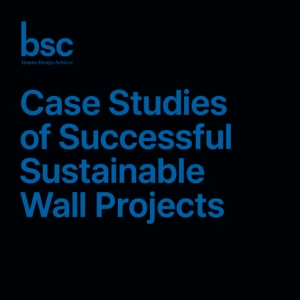
This is learned through real-life projects that enable understanding of the practical use of sustainable wall solutions.
Commercial Case Study:
- A Pune-based company has used soundproof gypsum walls.
- Benefits: Quick installation, flexible sections, and improved comfort for employees.
Public Infrastructure Project:
- In Delhi, fly ash brick was used in the construction of a government building and energy-efficient cladding.
The case study shows that sustainable walls are a low-cost, multi-purpose, and easily scalable solution that works across a variety of sectors.
Challenges and Solutions in Implementing Sustainable Wall Systems
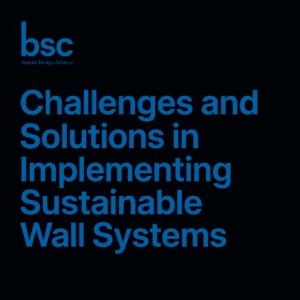
Although sustainable wall solutions seem beneficial, there are real-life challenges in their application.
Common Challenges:
- Material Availability: Natural materials and any specialty materials may not be available in some areas.
- Higher Upfront Costs: Increased expenses in the initial phase may be higher than traditional walls.
- Skilled Labor: Installing modular or prefabricated walls requires expertise and trained individuals.
Solutions:
- Identify reliable and reputable suppliers who will supply materials at a high frequency.
- And take a long-term view of savings and return on investment (ROI) to make the initial investment worthwhile.
- Use licensed contractors who have experience in building eco-friendly walls.
Addressing these difficulties makes projects effective, affordable, and sustainable.
Certifications and Standards for Sustainable Wall Solutions
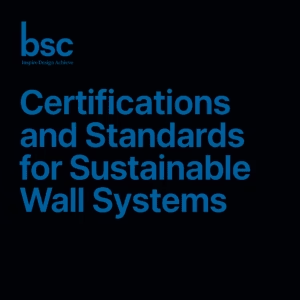 Certifications ensure reliability and compliance with green building practices.
Certifications ensure reliability and compliance with green building practices.
Importance:
- Quality Assurance: Suppliers who supply materials are certified, and the materials are efficient and safe.
- Market Advantage: Certified buildings attract buyers with pro-environmental interests.
- Sustainability Compliance: Helps developers comply with widely used global and national green building regulations.
Certified materials mean longer-lasting and safer walls and eco-friendly solutions that builders and homeowners get with their help.
Future of Wall Solutions: Sustainability Beyond 2025
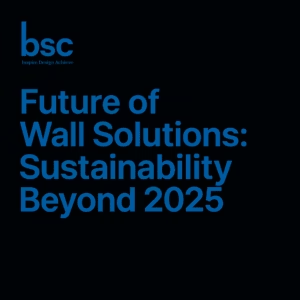
Technology, sustainability, and adaptive design shape the future of wall solutions.
Emerging Trends:
- Bright Walls: Add lighting, HVAC, and IoT sensors.
- Circular Economy Materials: Wall systems that can be recycled and reused.
- Adaptive Walls: These are modular and flexible to suit the needs of any space.
Benefits:
- Efficiency: Climate-controlled walls that are energy efficient.
- Flexibility: Modular designs can be easily reconfigured.
- Sustainability: Produces less waste, increases durability, and materials are renewable.
The walls of the future will be energy efficient, more functional, and effective throughout the life of all structures, not just walls.
BSC Interiors: Partnering for Sustainable Wall Solutions
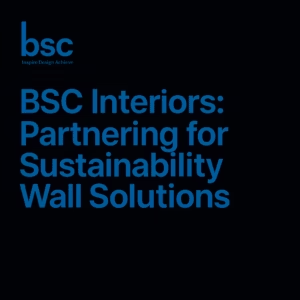
BSC Interiors serves as an experienced source and provider of sustainable wall systems that can help businesses and homeowners achieve sustainable, yet high-quality options.
Our Channel Partnerships:
BSC Interiors also collaborates with mainstream brands to provide high-quality wall solutions:
- Vox: Championing unusual wall panels and module solutions.
- 3M: Offers top-notch acoustic and protective wall films that improve durability and performance.
- Somany: Manufacturer of decorative panels and eco-friendly wall cladding that can be used in both residential and commercial premises.
Our Offerings:
- Commercial Expertise: Specialists in Office, Mall, Hotel, and Institutional Buildings.
- Eco-Friendly Products: We offer recycled walls, modular walls, and energy-efficient walls, sourced organically and from preferred suppliers.
- End-to-End Support: Get advice on the proper selection of the product of your choice, installation advice, and after-sales care.
Benefits of Partnering with BSC Interiors:
- Vox/3M/Somany premium, certified wall solutions available.
- Competent guidance on design, comfort, and durability.
- Seamless implementation of projects (residential and commercial) in terms of both quality and efficiency.
BSC Interiors uniquely caters to the global requirements of each wall solution project while maintaining efficiency, environmental awareness, and modernity, and leverages its strategic partnerships to deliver the most advanced products and services till the year 2025 and beyond.
Conclusion: Building a Sustainable Future with Wall Solutions
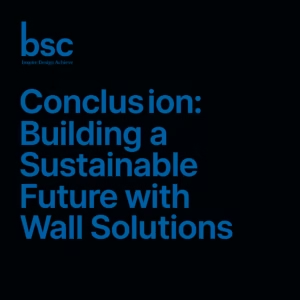
In 2025, all projects falling under the residential, commercial, and industrial categories will feature not just luxury but also their sustainable wall solutions. Made from sustainable materials, using energy-efficient patterns and high-quality techniques, walls serve an essential purpose for eco-friendliness, indoor comfort, and aesthetics.
Key Takeaways:
- Environmental Benefits: Recycled, renewable, and low-VOC materials contribute to reducing carbon emissions as well as improving indoor air quality.
- Cost Efficiency: Heating and cooling costs are reduced through energy-efficient walls, while long-lasting materials also reduce maintenance and replacement costs.
- Design Versatility: New wall systems such as modular elements, 3D surfaces, and feature walls can offer homeowners and interior designers flexibility of style and functionality.
- Technological Integration: Smart walls and prefabricated solutions simplify the installation process, enhance functionality, and future-proof the interior.
Why Choose BSC Interiors:
- BSC Interiors is a well-established channel partner of top brands such as Vox, 3M, and Somany, so high-quality, eco-friendly walls are guaranteed.
- Offers tailored services such as product selection, installation advice, and after-sales support.
- Offers both residential and commercial expertise to deliver a solution that is efficient, durable, and visually stunning.
More than just a design choice, sustainable wall solutions are an investment based on energy efficiency, environmental responsibility, and sustainability. With BSC Interiors as your partner, you can rest assured that your project has achieved the highest quality, sustainable, and environmentally friendly results in line with the latest 2025 trends.
